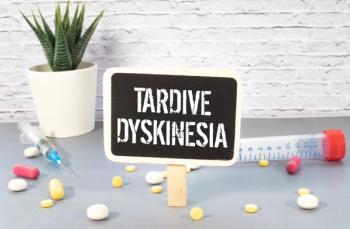
A Look at Drug-Drug Interactions in Patients with Bipolar Disorder
Up to 20% of patients with bipolar disorder have 4 or more medications, so it is important to be aware of these common drug-drug interactions.
Bipolar Update
Patients with bipolar disorder frequently receive polypharmacy, with up to 20% of patients getting 4 or more bipolar medications.1 Problematic drug-drug interactions occur often, impacting effectiveness or safety. They can be pharmacokinetic or pharmacodynamic. Yet these interactions receive little attention in the various practice guidelines and algorithms for the psychopharmacologic management of bipolar disorder. Some of these will be summarized here and in a subsequent article.
Weight Gain
The antipsychotics that may cause weight gain—especially olanzapine, quetiapine, and clozapine—can cause even more weight gain when added to valproate.
Hypothyroidism
Lithium is well known to interfere with the synthesis and release of thyroid hormones and, in the brain’s effort to compensate for this, thyroid-stimulating hormone will increase. Periodic monitoring is required. What is not so well known is that carbamazepine (CBZ) decreases T4, possibly by induction of the UGT metabolizing enzyme, which exacerbates or hastens the onset of hypothyroidism.1 Thus, the combination of lithium and CBZ may present additive risks. Quetiapine also has some evidence of causing thyroid dysfunction.1
Tremor
Lithium and anticonvulsants—especially valproate and CBZ—produce a metabolic-type or action tremor (ie, it is worse when doing an action like extending the arms—similar to benign familial essential tremors and tremors associated with hyperthyroidism, electrolyte abnormalities, and alcohol intoxication and withdrawal). When these medicines are used in combination, the severity or likelihood of tremor increases.
Antipsychotics—especially the older neuroleptics and risperidone/paliperidone—produce Parkinsonian tremors (resting tremors—slower than metabolic tremors, rhythmic, typically 4 to 6 beats per second).2 Lithium seems to increase antipsychotic-induced Parkinsonian tremors by a not-well-understood mechanism.
Osteoporosis and Fractures
Antipsychotics that raise prolactin (eg, risperidone, paliperidone, and most first-generation antipsychotics) increase osteoporosis risk through a pharmacodynamic effect. For this reason and others, guidelines now recommend routine monitoring of prolactin change with all antipsychotics.3 Selective serotonin reuptake inhibitors (SSRIs), which are usually not recommended in bipolar patients but often used, also increase osteopenia by a different mechanism involving serotonin. With use of both agents, one can expect an additive harmful effect on bone metabolism.
CBZ also causes osteoporosis through its effect to induce the metabolism of vitamin D. Thus, the combination of CBZ with the prolactin-inducing antipsychotics or with SSRIs, or all three in combination, may produce additive bone harms over the long term.1 But here’s some good news: Lithium may protect from osteoporosis. The use of lithium in combination with antipsychotics and/or SSRIs could reduce the risk associated with the other agents. Better still: Use lithium alone for your patients with bipolar disorder if you can.
QTc Increase
Watch out for drug-drug interactions with combinations involving ziprasidone, haloperidol, citalopram, escitalopram, quetiapine, risperidone, and lithium.4
References
1. de Leon J, Spina E. Possible pharmacodynamic and pharmacokinetic drug-drug interactions that are likely to be clinically relevant and/or frequent in bipolar disorder. Curr Psychiatry Rep. 2018;20(3):17.
2. Osser DN. Neuroleptic induced pseudoparkinsonism. In: Joseph AB, Young RR, eds. Movement Disorders in Neurology and Neuropsychiatry, 2nd Edition. Blackwell Science; 1999:61-68.
3. Osser DN. Prolactin monitoring in first-episode psychotic patients. Schizophr Res. 2017;189;2-3.
4. Hindley G, Gall N. QT interval prolongation. In: Taylor DM, Gaughran F, Pillinger T, eds. The Maudsley Practice Guidelines for Physical Health Conditions in Psychiatry. Wiley Blackwell; 2021:23-33.
Newsletter
Pharmacy practice is always changing. Stay ahead of the curve with the Drug Topics newsletter and get the latest drug information, industry trends, and patient care tips.































































































































